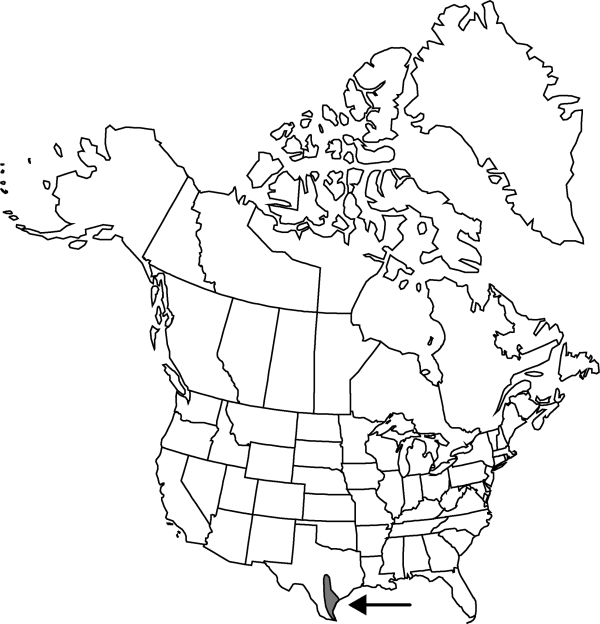Difference between revisions of "Mirabilis austrotexana"
Phytologia 75: 438, fig. 2. 1994.
FNA>Volume Importer |
imported>Volume Importer |
||
| (6 intermediate revisions by 2 users not shown) | |||
| Line 23: | Line 23: | ||
|elevation=0-300 m | |elevation=0-300 m | ||
|distribution=Tex.;probably also adjacent Mexico (Tamaulipas). | |distribution=Tex.;probably also adjacent Mexico (Tamaulipas). | ||
| − | |discussion=<p>Mirabilis austrotexana is very closely related to, and perhaps only a southern race of, the M. carletonii phase of M. glabra.</p> | + | |discussion=<p><i>Mirabilis austrotexana</i> is very closely related to, and perhaps only a southern race of, the M. carletonii phase of <i>M. glabra</i>.</p> |
|tables= | |tables= | ||
|references= | |references= | ||
| Line 32: | Line 32: | ||
-->{{#Taxon: | -->{{#Taxon: | ||
name=Mirabilis austrotexana | name=Mirabilis austrotexana | ||
| − | |||
|authority=B. L. Turner | |authority=B. L. Turner | ||
|rank=species | |rank=species | ||
| Line 47: | Line 46: | ||
|publication year=1994 | |publication year=1994 | ||
|special status= | |special status= | ||
| − | |source xml=https:// | + | |source xml=https://bitbucket.org/aafc-mbb/fna-data-curation/src/2e0870ddd59836b60bcf96646a41e87ea5a5943a/coarse_grained_fna_xml/V4/V4_109.xml |
|genus=Mirabilis | |genus=Mirabilis | ||
|section=Mirabilis sect. Oxybaphus | |section=Mirabilis sect. Oxybaphus | ||
Latest revision as of 21:56, 5 November 2020
Stems erect, few, moderately leafy mostly in proximal 2/3, few branched, 7–15 dm, glabrous basally, glabrous or sparsely glandular-puberulent distally. Leaves ascending at 30–70°, progressively reduced toward inflorescence; petiole 0.3–2 cm; blade green, lanceolate to lance-ovate, 3–12 × 1–5 cm, thick and moderately succulent, base broadly obtuse to cuneate, apex acute or tapered to rounded tip, surfaces glabrous or sparsely pubescent. Inflorescences terminal and in upper axils, open, widely branched from main axis; peduncle 5–10 mm, glabrate or sparsely puberulent or spreading viscid-villous, crosswalls of hairs pale; involucres pale green, widely bell-shaped, 4–5 mm in flower, 7–10 mm in fruit, glabrous (except, often, margins) or very sparsely puberulent or villous, 70–80% connate, lobes broadly ovate, rounded. Flowers 3 per involucre; perianth pink to reddish purple, rarely white, 0.8–1 cm. Fruits brown to grayish or purplish brown, narrowly obovate, 4–5.3 mm, very sparsely pubescent with hairs 0.1–0.5 mm; ribs round-angular, 0.3 times width of sulci, 0.5–1 times as wide as high, smooth on angle, usually rugose on sides, occasionally interrupted and tuberculate; sulci with low tubercules, often also with transverse wrinkles.
Phenology: Flowering primarily spring–fall, occasionally winter.
Habitat: Mudflats, sandy or loamy soils
Elevation: 0-300 m
Distribution

Tex., probably also adjacent Mexico (Tamaulipas).
Discussion
Mirabilis austrotexana is very closely related to, and perhaps only a southern race of, the M. carletonii phase of M. glabra.
Selected References
None.